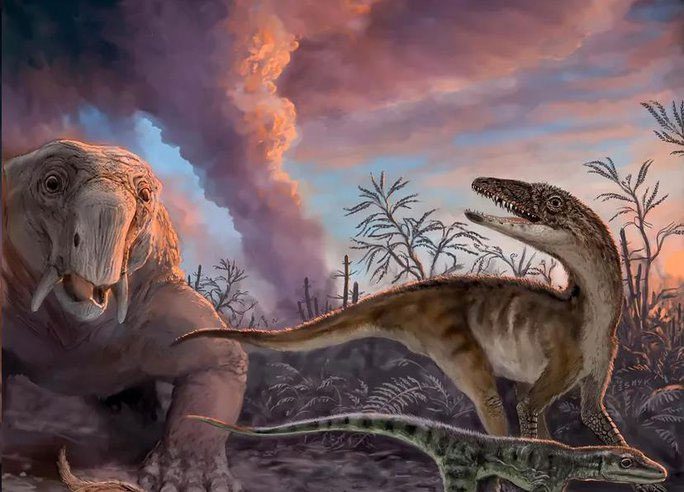Researchers from the UK, Germany, and Brazil have ventured back in time to the boundary between the Triassic and Jurassic periods, uncovering a phenomenon that not only terrified humanity today but also transformed Earth into a planet of dinosaurs.
According to a study recently published in Current Biology, 201 million years ago, at the end of the Triassic period making way for the Jurassic, Earth faced a massive extinction event, wiping out many large vertebrate species. Yet, this catastrophe seemingly paved the way for a new group of “monstrous” creatures to enter their golden age: Dinosaurs.

Climate change has been clearly proven to harm many species.
A team of scientists from the University of Birmingham and the University of Bristol (UK), Friedrich-Alexander University Erlangen-Nuremberg (Germany), and the University of São Paulo (Brazil) reconstructed a model of global climatic conditions around the “death marker” 201 million years ago, including temperature, rainfall, and species data.
One of the phrases that humanity fears most today, which is being addressed through global efforts, has been identified as the cause of the Triassic-Jurassic extinction: Global warming.
Climate change has been clearly shown to harm many species by contracting habitats, affecting health, food sources…
Many plant and animal species from the Triassic suffered from this and “disconnected” from the evolutionary tree. However, dinosaurs responded in a uniquely opposite manner.
As previous fossil evidence revealed, the earliest dinosaur species emerged during the Triassic period. Contrary to popular belief, most Triassic dinosaurs were quite small.
When the “death” of climate change emerged, these dinosaurs adapted to survive in a remarkably distinct way: evolving into larger and more diverse creatures, starting with the first sauropods, which included many large, sturdy-legged, herbivorous species.
This group of dinosaurs thrived and gradually spread across the globe during the Jurassic. They preferred warmer temperatures and quickly dispersed to the newly formed warm regions of Earth.
The researchers stated that they are continuing to use this technique to explore the period following the “death marker” 120 million years later, to gain further insights into how these creatures progressed into their golden age.


















































